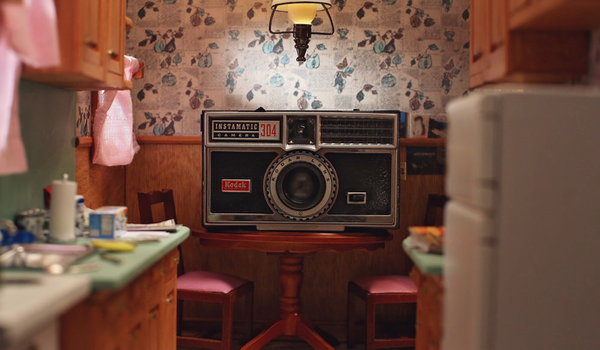Movie review by Greg Carlson
Siblings Elan and Jonathan Bogarin remember their late grandmother in “306 Hollywood,” an appealing mixture of nonfiction and magical realism the filmmakers have dubbed “normalized magic.” Premiering in competition at the 2018 Sundance Film Festival, the film will be broadcast as part of the 31st season of public television’s “POV” series following a number of festival screenings. “306 Hollywood” has been compared to the audio segments one might hear on NPR’s “This American Life” or “Radiolab,” but the filmmakers use their visual sensibilities to great advantage. A seemingly simple house, and all the objects accumulated within, turn out to be a splendid gift to the viewers who will immediately recognize familiar aspects and dimensions of their own departed loved ones.
“306 Hollywood” is the mediated monument to Annette Ontell, a New Jersey grandmother who lived what many might describe as a full but unremarkable life at the title address. The Bogarins are shrewd and competent storytellers, however, melting down that “unremarkable” adjective to poke at questions of grief and the way we honor the lives of the ones who have meant the most to us on an intimate level. Midway through the movie, a visit to Bob Clark, the full-time Director of Archives at the Rockefeller Archive Center in Sleepy Hollow, New York, invites what might be the key question of the story: are ordinary people less important than the titans of history whose accomplishments are preserved and shared at a more privileged rate?
Clark’s answer is a good and satisfying one, and the Bogarins — who may already have suspected how the response would shape their feature — add to Ontell’s legacy even when they focus attention on a wonderfully curated group of outsiders. M.I.T. professor and physicist Alan Lightman addresses the mysticism of presence and absence at the molecular level. Fashion and textile conservator Nicole Bloomfield analyzes the dresses constructed by Ontell, who designed fashionable clothing for wealthy New York women and always sewed a copy for herself from the leftover fabric. Jonathan’s affinity for time spent in Rome leads us to the Biblioteca Casanatense for a lesson on cataloguing that will delight anyone who has ever admired the work of a devoted librarian.
But no matter how far away Elan and Jonathan take us from the house, Grandma Annette looms large, courtesy of a decade’s worth of videotaped interviews that began when she was 83 years old. It is hard to say whether “306 Hollywood” could have been completed without those recordings, given the vivacious personality of Ontell and the candid way in which she responds to all sorts of queries. In one sequence, which has divided reviewers, Ontell is coaxed into trying on an old dress by her daughter and granddaughter. A corresponding sequence, in which dancers twirl elegantly in the grass of Ontell’s front yard, affirms the highly particular vision of the Bogarins.
That lovely image, and several others, like the display of old clothing on the house’s rooftop and exterior siding and a rainbow assortment of old toothbrushes and dentures, evoke the compositional symmetries of Wes Anderson, cited along with Agnes Varda by the Bogarins as an inspiration. A scene in which actors lip-synch a tape-recorded 1972 family argument in the very room where it took place recalls Clio Barnard’s “The Arbor,” and the presence of a custom scale model of Ontell’s home, meticulously designed and executed by master dollhouse builder Rick Maccione with wallpaper by Evan Raney and miniatures by Frank Galica, coincidentally echoes “Hereditary,” another Sundance premiere deeply attentive to family, albeit in a decidedly different genre.
